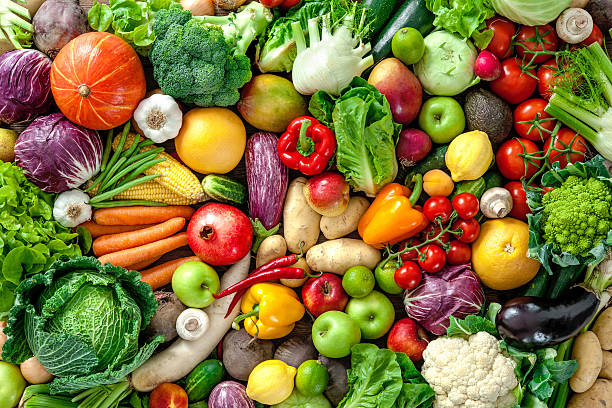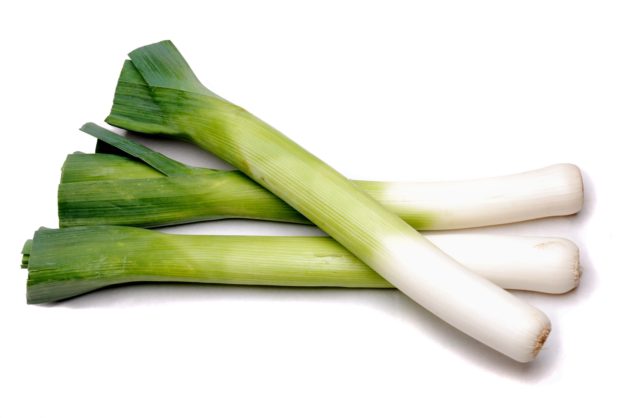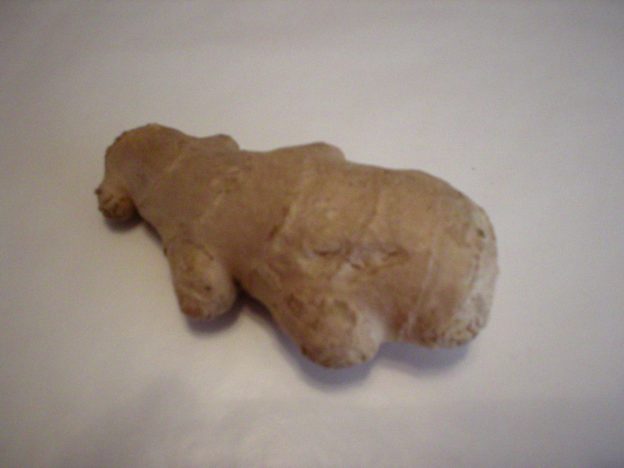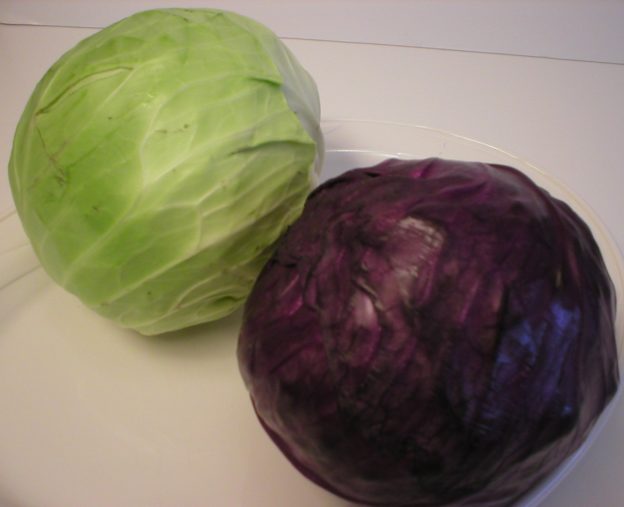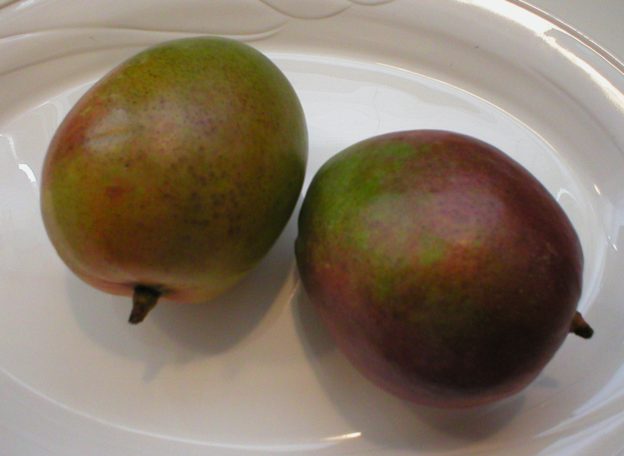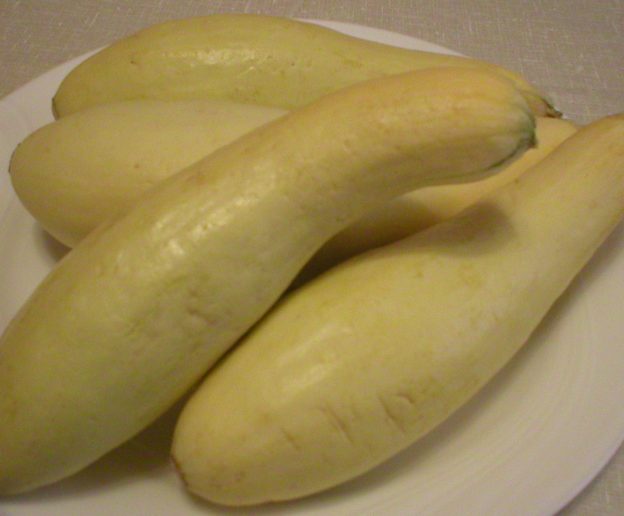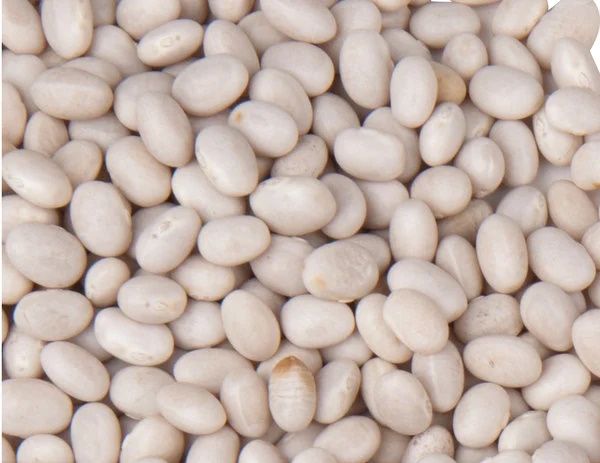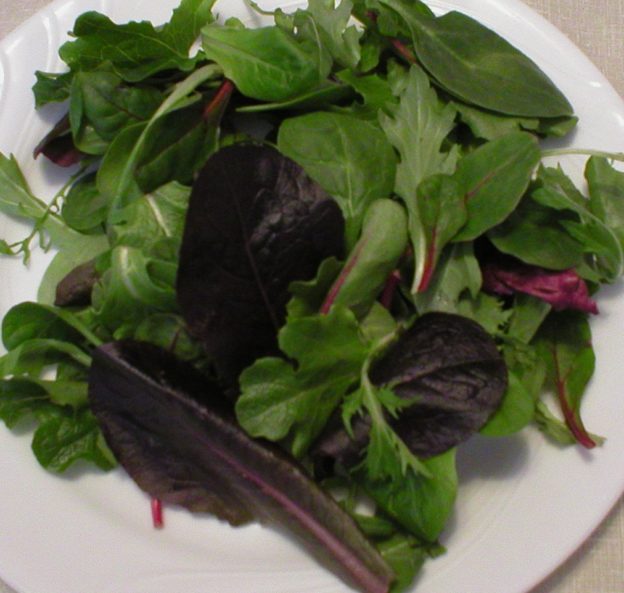Polyphenols 101
What are Polyphenols?
If you’ve read any literature about nutrition, or listened to nutrition-based podcasts or videos, you’ve likely heard about “polyphenols” in foods. But what exactly are they?
Polyphenols are a group of compounds that plants make for protection against too much ultraviolet radiation and/or aggression by pathogens. Over 8,000 polyphenols have been identified in various plant species. Polyphenols are classified into different groups based on their structure and function of the number of phenol rings they contain.
The main classes of polyphenols include phenolic acids, flavonoids, stilbenes, and lignans. Some are found in all plants, whereas others are found only in specific plants. The classes of polyphenols can be further divided into many subclasses. Polyphenols can be responsible for providing the colors of flowers, fruits, and leaves, whereas others may act as antipathogenic agents in response to infection or injury to the plant. In the human body, some act as phytoestrogens, while many have antioxidant and anti-inflammatory properties that could have beneficial effects against many chronic diseases.
Some polyphenols often mentioned in scientific or health-related literature include anthocyanins, isoflavones, quercetin, catechins, myricetin, flavonols, flavanols, flavones, flavanones, resveratrol, and lignans.
What is their function in human health and nutrition?
In food, polyphenols can contribute to bitterness, astringency, color, flavor, aroma and oxidative stability of specific plant foods. Over 8,000 polyphenols have been identified in fruits, vegetables, nuts, seeds, herbs, spices, and teas. They have powerful antioxidant and anti-inflammatory properties that can have profound effects on our health. In brief, they can improve heart health, and reduce the risk of diabetes, cancer, and other chronic diseases, while improving immunity and overall health and well-being.
Antioxidants and Disease Prevention. With polyphenols acting as antioxidants, they naturally fight harmful free radical molecules, preventing oxidative stress. This activity helps to protect us from the root causes of many chronic diseases. Many research studies have strongly suggested that long-term consumption of diets high in plant polyphenols decreases inflammation and lowers our risk of developing many diseases such as cancer, cardiovascular diseases, diabetes (and its potential consequences of blindness and amputation), osteoporosis, hypertension, asthma, neurodegenerative diseases, and more.
In a study reported in the May 2021 issue of the journal Molecules, researchers summarized current knowledge on the effects of polyphenols on the prevention of specific diseases. They found that polyphenols can hamper cancer progression, likely due to their involvement in cancer cell apoptosis (cell death). They were also shown to modulate cell cycle signaling and promote cellular defense systems. Current evidence shows that dietary polyphenol intake is linked to lower cancer rates. This has been shown on lung and gastric cancers, along with having beneficial effects on disease progression. Analysis confirmed that a higher intake of some flavonoid classes could lower the risk of some cancers, specifically colon, lung, and stomach cancers.
Oxidative stress has been linked to endothelial dysfunction, which triggers the development of atherosclerosis, leading to cardiovascular disease. Consuming foods that are high in polyphenol antioxidants can reduce oxidative stress and inflammation which could help to reduce the risk of heart disease.
Anti-Aging Effects. Polyphenols can also have anti-aging effects. Oxidative damage takes place normally as we age. The antioxidant capacity of blood is related to dietary intake of antioxidant-rich foods. Research has found that an antioxidant-rich diet is effective in reducing the negative effects of aging. Studies suggest that the antioxidant and anti-inflammatory polyphenolic compounds, especially anthocyanins which are types of flavonoids found in fruits and vegetables, may act as direct anti-aging compounds. Anthocyanins are abundant in brightly colored fruits such as berries and grapes.
Resveratrol, as found in grapes, has been found to consistently prolong the lifespan. It has been found to increase insulin sensitivity. It has also been found to help regulate the expression of genes that contribute to longevity and the resistance of various stresses that can lead to disease.
In a study reported in the March 2007 issue of the Journal of Agricultural and Food Chemistry, researchers reported that quercetin has also been reported to have preventive effects against aging. Quercetin is found in citrus fruits, apples, onions, parsley, sage, tea, red wine, olives, grapes, dark cherries, and dark berries such as blueberries, blackberries, and bilberries.
Neuroprotective Effects. Polyphenols are also helpful in deterring the adverse effects of aging on the brain. Polyphenols are able to cross the blood-brain barrier, which tightly controls the influx of fluids and chemicals in the brain.
Oxidative stress is a factor leading to neurodegenerative diseases, including Alzheimer’s disease. Because polyphenols are strong antioxidant compounds, their consumption may provide protection against neurological diseases. Resveratrol, found in colorful grapes and red wine has been found to be protective against the onset of Alzheimer’s disease. Researchers found that consumption of fruit and vegetable juices containing high concentrations of polyphenols at least three times a week may play an important role in delaying the onset of Alzheimer’s disease. Such antioxidants appear to offer protection because of their ability to influence and modulate cellular processes involved in signaling, proliferation, apoptosis, and redox balance and differentiation.
Researchers have also found that polyphenols provide protective effects against Parkinson’s disease. Consumption of green tea has been linked to the reduced risk of developing Parkinson’s disease. A polyphenol in tea has been shown to protect against a specific neurotoxin that induces Parkinson’s-like disease.
Anti-Diabetic Effects. Polyphenols have been found to improve sensitivity to insulin, reducing the risk of developing diabetes. In a study reported in the December 2021 issue of the journal Frontiers in Pharmacology, researchers found that polyphenols may have antidiabetic effects through their ability to inhibit specific compounds that lead to the development of Type 2 diabetes, along with modulating oxidative stress, inflammation, and other pathways that can lead to decreased insulin sensitivity.
A review of numerous studies on the effects of polyphenols on Type 2 diabetes was reported in the December 2017 issue of the Medical Journal of the Islamic Republic of Iran. Both animal and human studies showed that polyphenols reduced hyperglycemia and improved both insulin secretion and sensitivity. The possible mechanisms included reducing glucose absorption in the intestine, inhibiting carbohydrate digestion, stimulating insulin secretion, modifying glucose release from the liver, activating insulin receptors and glucose uptake in insulin-sensitive tissues, and modulating intracellular signaling pathways along with gene expression. They concluded that various dietary polyphenols may influence blood glucose at different levels and may also help to control and prevent diabetes complications.
Lung Protection. Dietary polyphenols have also been shown to have preventive effects in the treatment of asthma. Epidemiological evidence that polyphenols may protect against obstructive lung disease comes from studies showing that apple intake reduces the prevalence and incidence of asthma and has a positive effect on lung function. Increased consumption of the soy isoflavone, genistein, also has been associated with better lung function in asthmatic patients.
Bone Protection. In animal studies, intake of the polyphenols genistein and daidzein, commonly found in soy, has been reported as being beneficial for preventing bone loss and reduced trabecular volume caused by ovariectomy. In another animal study reported in the November 2010 issue of the Journal of Bone Mineral Research: The Official Journal of the American Society for Bone and Mineral Research, researchers studied the effects of a mixture of phenolic acids found in the blood of young rats fed blueberries. They found the compounds significantly stimulated osteoblast cells, resulting in significantly increased bone mass.
In the September 2012 issue of the Journal of Bone and Mineral Research, researchers studied 3,160 sets of twins registered in the TwinsUK registry. Habitual intakes of flavonoids and specific subclasses were calculated based on food frequency questionnaires. Bone density was measured. They found that total flavonoid intake was positively associated with bone mineral density, with effects markedly noted for anthocyanins and flavones both at the hip and spine. Their findings support the role of flavonoids having a positive effect on bone health.
In the March 2014 issue of the journal Antioxidants (Basel), researchers reviewed a series of human, animal, and cell studies examining the effects of dietary polyphenols, especially those found in berries, and their effects on age-related bone loss. Researchers concluded that the majority of human studies they reviewed demonstrated strong evidence of associations between polyphenol intake (especially from berries), reduced fracture risk, increased bone formation markers, and increased bone mineral density. They stated that berry consumption may be a good dietary strategy to reduce the effects of age-related bone loss and lower the risk of osteoporosis.
Protection From the Sun. Polyphenols have also been found to protect the skin from sunlight damage. Animal studies found that the polyphenols in tea, when taken internally or applied topically, reduce the risk of adverse skin reactions following UV exposure.
Antiviral Activity. Fruits, vegetables, nuts, seeds, spices, herbs, and teas are potential sources of polyphenols. They benefit human health through their antioxidant, anti-inflammatory, anticancer, anti-allergic, antihypertensive, and antiviral properties, among others. A number of studies have shown the potential of polyphenols against various viruses that are responsible for widespread health problems.
Polyphenols in black tea have been found to be helpful with mineral absorption in the intestine, along with exerting antiviral activity. Theaflavins in black tea were found to have anti-HIV-1 activity by inhibiting entry of the HIV-1 virus into target cells. Compounds in green tea have also been shown to have antiviral activity.
According to a study presented in the October 2021 issue of the journal Foods, berries are a rich source of various compounds with antiviral activity. Black elderberries, black currants, blueberries, cranberries, aronia berries, and chokeberries are among those that have demonstrated strong antiviral benefits. Pomegranate fruits have also been shown to have antiviral properties.
What foods contain polyphenols?
With over 8,000 polyphenol compounds having been identified, various types can be found in all whole plant foods such as fruits, vegetables, nuts, seeds, herbs, spices, and teas. In general, plant foods contain a complex mixture of polyphenols, with most being concentrated in the outer layers of plants. This means that it’s best to eat the peels of your fruits and vegetables, if they are edible. Certain polyphenols, like quercetin, are found widely throughout the plant kingdom. Others, such as flavanones and isoflavones, are specific to particular plants.
Specific foods and spices that are particularly high in polyphenols are berries (including blueberries, blackberries, strawberries, and raspberries), plums, sweet cherries, apples, black currants, black olives, pomegranates, artichokes, red onion, spinach, broccoli, asparagus, carrots, cocoa powder and dark chocolate, black tea, coffee, hazelnuts, pecans, turmeric, cloves, cinnamon, ginger, cumin, star anise, peppermint, and many more.
Different factors affect the polyphenol content of plants. The degree of ripeness at the time of harvest, processing, storage time, and environmental factors during growth of the plant, such as soil type, sun exposure, and rainfall, all affect the concentrations and proportions of various polyphenols found in plants. Generally, phenolic acid decreases during ripening, whereas anthocyanin concentrations increase.
Storage directly affects the polyphenol content of foods. The compounds are easily oxidized, which leads to changes in the quality of foods, reducing the polyphenol content over time. For instance, after six months of storage, flour contained the same phenolic compounds with regard to quality, but their concentrations reduced to 70% of what they were when the flour was fresh. Cold storage has only a slight effect on the polyphenols in apples, pears and onions.
What if I can’t get fresh foods?
Overall, if you can’t get the fresh foods you want year-round, opt for frozen varieties. Frozen fruits and vegetables are processed shortly after harvest, often within the same day. In this case, they are usually harvested at their peak of ripeness, which is contrary to foods harvested for shipment long distances. In that case, they are usually harvested early so they can ripen during storage and shipment, while sometimes being artificially ripened. If you are faced with foods that have traveled long distances before making it to your market, to get the most nutritional benefit from such foods, it may be in your best interest to choose frozen varieties.
Do polyphenols survive cooking?
Cooking has a major effect on the concentration and bioavailability of polyphenols in plant foods. The effects vary greatly from one food and polyphenol compound to the next. Furthermore, different cooking methods also affect the bioavailability of various polyphenols differently. Sometimes, the activity of polyphenolic compounds can be enhanced through cooking, while others can be greatly diminished with cooking. For instance, onions and tomatoes lose from 75% to 80% of their initial quercetin content after being boiled for 15 minutes. They lose 65% after being cooked in a microwave oven, and 30% after being fried. Yet, at the same time, the bioavailability of other polyphenols in tomatoes (naringenin and chlorogenic acid) can be increased with cooking. In general, boiling plant foods in a lot of liquid causes the most loss of polyphenols into the cooking water. When the liquid is consumed, as in soups and stews, the nutrients are not entirely lost. Otherwise, to help reduce the loss of these valuable compounds, cook the food for as short a time possible in the least amount of liquid possible. Steaming plant foods is an excellent alternative to boiling, and is often the best method for preserving the most polyphenolic compounds when these foods are cooked. Otherwise, consume these foods raw when possible.
Are polyphenol supplements effective?
We know that obtaining an abundance of polyphenols from plant foods can provide a wide array of health benefits. Many research studies confirm that long-term consumption of diets rich in polyphenols helps to protect us from many of the chronic diseases that affect people today. However, when consuming isolated compounds in supplement form, they may not be effective like they are when consumed in whole foods. They may even be detrimental to health and can possibly cause serious negative effects. An overview of the effects of polyphenols when consumed from food vs. supplements was published in the September 2018 issue of Frontiers in Nutrition.
First, taking isolated polyphenol supplements may give some people the impression that the supplements can replace healthy, whole foods like fruits and vegetables. An isolated compound cannot possibly take the place of a whole food, since foods contain hundreds to thousands of important chemicals that can boost health in a number of ways. Furthermore, the compounds in whole foods often work synergistically with each other to give their health-promoting effects. When taken in isolation, the complementary compounds are missing, so the same health effects cannot take place.
In some cases, isolated polyphenols may be used as fortifying agents in processed foods. Such foods are more energy-dense (containing more calories than valuable nutrients), rather than nutrient-dense (containing an abundance of nutrients versus the calories in the food) like whole plant foods. This difference alone can lead to weight gain when processed foods are consumed, despite their fortification with isolated polyphenols. Furthermore, when used as fortifying agents in processed foods, the complementary compounds that the isolated compound would normally interact with in the whole food, are missing. Therefore, it would not have the same healthful effect that it may have when consumed in the whole food.
When relying on clinical data demonstrating the positive effects of isolated polyphenols, it is important to note that tests are conducted using far greater quantities than may be found in whole foods or even in the fortification process. Such tests give a false impression as to the benefits of the isolated compounds since typical foods and even supplements do not supply them in such high quantities. Also, such tests are usually conducted with animals. The effects that such high amounts of isolated polyphenol compounds offer have rarely been tested in human trials.
One example of the possibility of polyphenol supplements having harmful effects was pointed out in the October 2021 issue of the journal Foods. Researchers studied the antioxidant resveratrol, which we know has many healthful properties when consumed in whole foods, and even red wine. However, cellular studies have examined resveratrol’s impact on the antiviral effects of interferon, a natural component of our immune system. Interferons inform the immune system that pathogens or cancer cells are in the body. Interferons trigger killer immune cells to fight those invaders. The researchers concluded that resveratrol supplementation was not suitable for treating the Hepatitis C virus, when compared with the activity of the natural immune system.
Taking isolated polyphenols in supplement form raises concern for harmful effects. Some manufacturers recommend intakes over 100-times higher than those currently associated with a common diet. Some supplementation trials of antioxidants have been associated with adverse effects, including increased mortality or stroke. In some cases, such high dosages of isolated polyphenols may interact with medications, causing potentially serious side effects. Currently, we do not have a complete understanding of safe, beneficial, and effective levels of taking isolated polyphenols, whether they are taken as supplements or included as fortifying agents in processed foods. To get the most benefit in the safest package, it is far better to consume whole plant foods than taking isolated supplements or getting them in processed foods.
Conclusion
Polyphenols are extremely healthful compounds found in natural plant foods. They can be very important in promoting overall health and wellness, along with helping to prevent chronic disease. Despite the availability of individual polyphenol supplements in the marketplace, it is advisable to strive to get such compounds from whole plant foods. Eating a diverse diet including an abundance of fresh fruits, vegetables, nuts, seeds, whole grains, legumes, herbs and spices can provide you with an array of different polyphenols which will help to boost your overall health and ward off potential disease. So, visit the produce department of your local grocery store and consider it to be an “all you can eat buffet,” after you check out at the register, of course.
Resources
https://health.clevelandclinic.org/polyphenols/
https://www.ncbi.nlm.nih.gov/pmc/articles/PMC2835915/
https://pubmed.ncbi.nlm.nih.gov/17323973/
https://www.webmd.com/diet/foods-high-in-polyphenols
https://www.ncbi.nlm.nih.gov/pmc/articles/PMC6160559/
https://www.ncbi.nlm.nih.gov/pmc/articles/PMC8712966/
https://www.ncbi.nlm.nih.gov/pmc/articles/PMC6014790/
https://www.uclahealth.org/news/polyphenols-can-be-found-in-many-fresh-foods
https://www.healthline.com/health/polyphenols-foods#vegetables
https://www.medicinenet.com/which_foods_are_highest_in_polyphenols/article.htm
https://www.healthline.com/nutrition/benefits-of-plums-prunes#TOC_TITLE_HDR_6
https://pubmed.ncbi.nlm.nih.gov/22549983/
https://pubmed.ncbi.nlm.nih.gov/20499363/
https://www.ncbi.nlm.nih.gov/pmc/articles/PMC4665444/
https://www.ncbi.nlm.nih.gov/pmc/articles/PMC5037798/
https://www.ncbi.nlm.nih.gov/pmc/articles/PMC8534698/
https://pubmed.ncbi.nlm.nih.gov/20066737/
https://pubmed.ncbi.nlm.nih.gov/34438146/
https://www.ncbi.nlm.nih.gov/pmc/articles/PMC2835915/
https://www.ncbi.nlm.nih.gov/pmc/articles/PMC8156030/
About Judi
Julia W. Klee (Judi) began her journey enjoying “all things food” in elementary school when she started preparing meals for her family. That love of food blossomed into a quest to learn more and more about health and wellness as related to nutrition. She went on to earn a BS Degree in Food and Nutrition, then an MS Degree in Nutrition. She has taught nutrition and related courses at the college level to pre-nursing and exercise science students. Her hunger to learn didn’t stop upon graduation from college. She continues to research on a regular basis about nutrition as it relates to health. Her hope is to help as many people as possible to enjoy foods that promote health and wellness.

